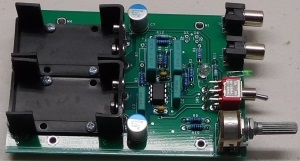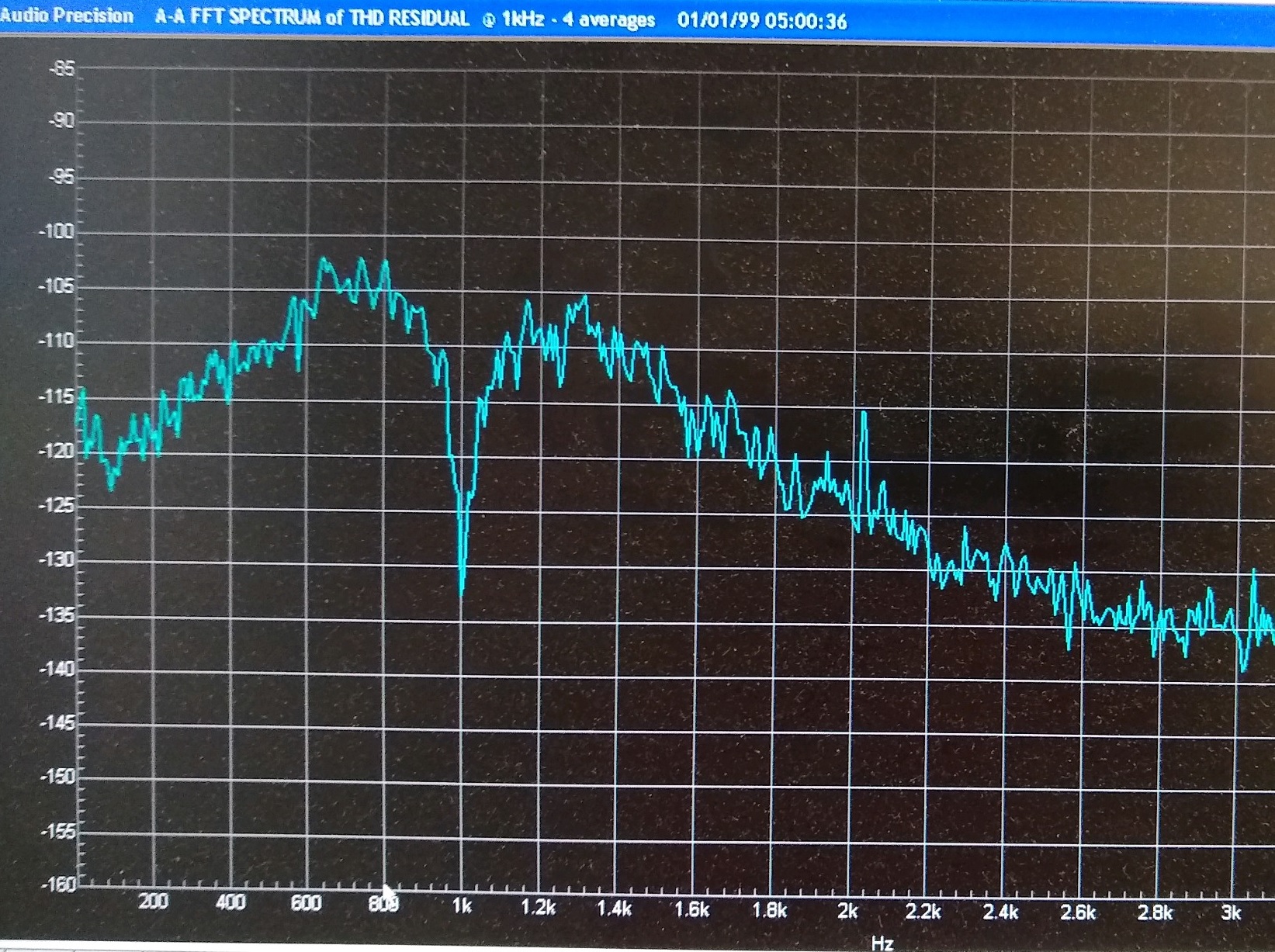



This oscillator has state of the art distortion performance, about 2 PPM, and it's mostly second harmonic. This distortion is better than the best A2D's, D2A's, and sound cards. Typically, getting distortion this low would could at least $1000.
How do we do it? Well, start with a really careful layout. Make sure you groom where all the nonlinear currents go. Bypass the power supplies well. Use only the highest performing op-amps. Use a high selectivity topology with low distortion. Top it off with the oldest trick in the book...an incandescent lamp used to provide the perfect balance of positive and negative feedback and LOW distortion! The only way you can get lower distortion is with an Audio Precision oscillator. The only way to measure the distortion is on an Audio Precision Distortion Analyzer in FFT Residual mode.
Like the 1KHZCLOTHED oscillator, it has stereo RCA outputs and a level control. It also runs from a pair of 9V batteries (not supplied), and has an LED power light. The specs:
Download the assembly manual for the 2 PPM oscillator.
Go to the store to order the oscillator kit.
I used an AP (Audio Precision) test set to measure the distortion residual after nulling out the 1 kHz. It shows:
The distortion of the oscillator is 30 to 40 dB better than the typical sound-card. That says that any distortion you see is essentially the distortion floor of your sound card.

Distortion measurement equipment used to be quite expensive. However, you can use a good sound-card, the free demo version of ARTA software, and a switchable attenuator to make high resolution distortion measurements. This youtube gives you an overview of how it's done.
In the video you'll see that I use a switchable attenuator. It does two things:
You can download a document here that has the parts list, and shows you how to build the switchable attenuator. I don't offer this as a kit, but you can order the parts from Mouser and Amazon.